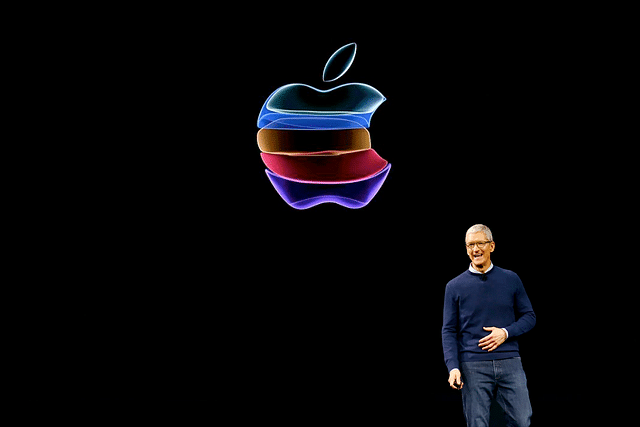
Despite $200 Billion In The Bank Apple Struggles To Find New Products Or Innovations
At the beginning of Apple launch event, CEO Tim Cook promised something incredible, but what he delivered was underwhelming and mildly disappointing.
Where is the innovation, Apple?
Apple has come a long way from iPods and iPhones, devices that changed the face of the music and smartphone industry across the world for good. Today, the newest iPhone on the block is no symbol of innovation, but a testament to what money can buy and what loyalty or addiction to a tech ecosystem can cost.
Firstly, the iPad is no longer one of the many tablets in the market. Now, it’s ‘the tablet’, the one that survived the economics and user experience.
The iPad Pro models, with their separately sold keyboards and the signature ‘Apple Pencil’, have garnered stellar reviews for their performance, and have been in stores for more than two years now.
This year, Apple came out with a budget upgrade for the iPad. While their tablet market is threatened by none, there was nothing new on the cards in terms of user experience or device capabilities. It’s just a few inches bigger and a couple of hundred dollars less.
Secondly, Apple’s smartwatch, with a 46 per cent share of the product market, is now more than just a piece of fancy hardware on one’s wrist. The event focussed on the watch’s newest capability — ‘the always-on’ screen.
However, with its advanced sensors for measuring health vitals, especially the ones related to the cardiac system, Apple is now using the data generation capacity of the watch to further its sales.
Interestingly, the new Series 5 watch came with a price cut, starting at $399 upto $1,499, and the prices of the earlier Series 3 were revised to $199 to $329.
The iPhones, the business end of any Apple event, had an underwhelming launch. This year, Apple’s iPhone offering was installation of three and five cameras on iPhone 11 and iPhone 11 Pro, and appealing to the users via ‘slofies’ or what they call slow-motion selfies.
The presentation, at length, described the enhanced camera capabilities of the new iPhones. At one point, the camera description got so redundant that it felt that Apple was communicating only to a gathering of pretentious Instagram influencers. For the average iPhone user, this was another annual offering with nothing but an increment in the model number and price.
Like the iPad and smartwatch, the iPhone 11 models come with a price cut too. The iPhone 11 can be bought for as little as $699, $50 less than the iPhone XR model that was launched last year. The price of iPhone 8, the oldest iPhone in manufacturing, has been revised to $449 from its previous high of $599, thus making the smartphone economically inclusive. The iPhone Pro Max comes at a starting price of $1,099, however.
In terms of hardware, Apple’s innovation was only on the pricing front, and this is where their second offering comes into play, Apple Services.
Of the $53 billion revenue in Q3 of 2019, $26 billion came from iPhones, $5.5 billion came from wearables that include the smartwatch, AirPods, and Beats, and almost $11.5 billion came from services. While iPhone sales went down by 12 per cent, the services reported a gain of 13 per cent.
In terms of services, Apple took its biggest leap forward this year with the launch of Apple Arcade and Apple TV+.
Firstly, Apple Arcade happens to be the world’s first gaming subscription service, exclusive to Apple devices. At $4.99 and family access (prices vary as per country), the service, assuming it has games that can engage and impress the users, would be the first-of-its-kind success.
Two, the Apple TV+, at $4.99 (prices vary as per country), comes with a seven-day trial and access for upto six people. For the ones buying an Apple iPhone, iPod, iPad, Mac, or TV this fall, the service comes free for a year.
At $4.99, Apple TV+ is cheaper than most of its streaming counterparts. However, while it may make things intricate for Netflix, it is far from being a Netflix killer, yet. Even though Apple has committed $6 billion to its streaming service, the innovation will not be in how much it can spend or how big a star they can hire, but what they create.
So, where’s Apple innovating?
The answer is nowhere. In terms of hardware, it has reached a point of saturation, given they are now using ‘slofies’ to sell their iPhones and price cuts to sell their iPads. In terms of gaming and streaming services, the company is in its nascent stages, while its other services are steadily growing in scale, but not enough to warrant a complete focus on the services.
Thus, the price cut on the new hardware offerings for Apple was essential. By offering iPhone in the $600 range and an iPad in the $300 range, Apple not only wants to curb its falling sales but also wants to drive the revenues from its services.
Irrespective of the cost of the hardware, it’s the services that Apple aims to push forward. An iPhone may cost $449 or $1,499, it’s the service that will be relevant to users across all product range.
However, for a company that sits on over $200 billion of cash, revenue considerations and improvements in the neighbourhood of $3 to $5 can hardly be termed as innovation, and therefore, the increase in revenues from its services must be taken with a pinch of salt.
While Apple’s big bet on services will pay off with time, it’s the hardware front where product saturation is now haunting the company.
CEO Tim Cook promised something incredible when he began the Apple event, but what he delivered was underwhelming and mildly disappointing.
Where is the innovation, Apple?